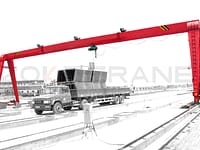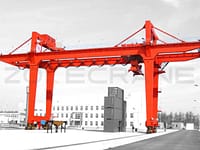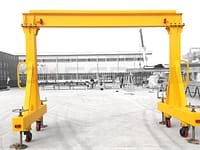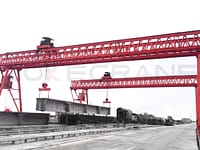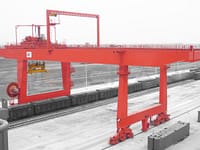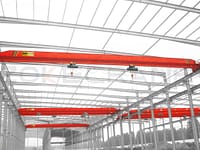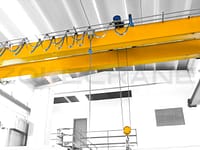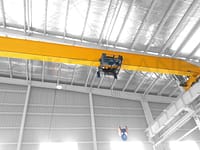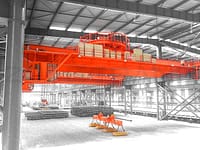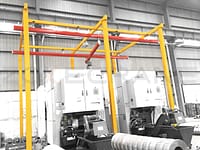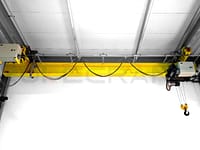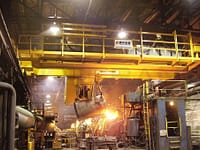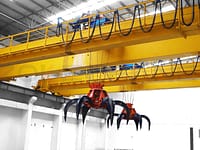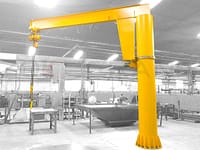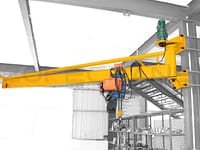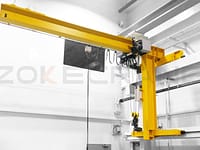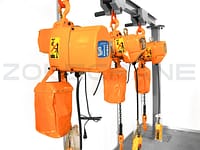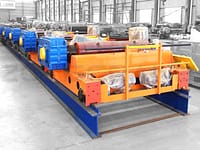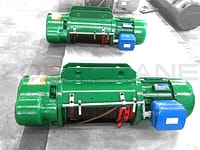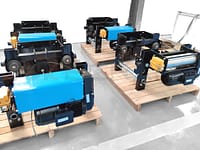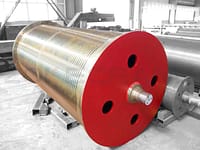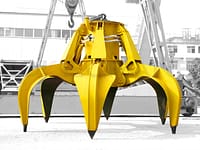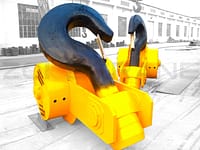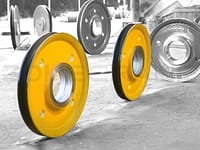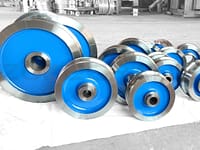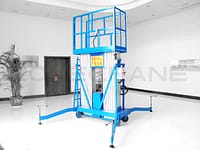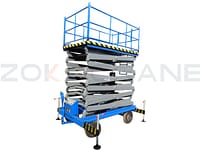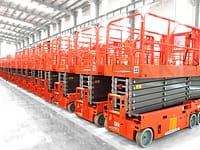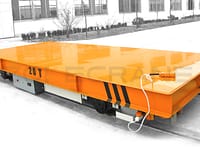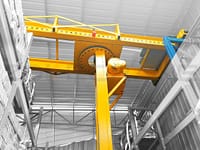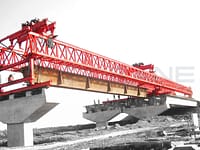Pulley sets are the main load-bearing parts of a crane and can change the working tension within the flexure or change the speed and direction of its movement due to different use cases. It can be used as a guide pulley, more often to form a pulley set.
There are two types of pulley for cranes: fixed pulleys and dynamic pulleys, which are combined to form pulley sets.

Crane fixed pulleys
The fixed pulley is essentially an equal-arm lever, which does not save force or effort, but can change the direction of the force.
Characteristics of a fixed pulley: pulling a hook code through a fixed pulley does not save force. The reading of the spring scale is the same with or without the fixed pulley. As can be seen, the use of a fixed pulley does not save force but can change the direction of the force. In many cases, changing the direction of the force will make the work easier.
The principle of the fixed pulley: the fixed pulley is essentially an equal-arm lever, with the power L1 and resistance L2 arms being equal to the radius of the pulley. It is also possible to conclude that a fixed pulley does not save force according to the lever balance condition
Crane dynamic Pulley
A dynamic pulley is essentially a lever where the power arm is twice the resistance arm, saving 1/2 the force and 1 times the distance.
The characteristics of a dynamic pulley: using a dynamic pulley saves half the force and half the distance. This is because when using a dynamic pulley, the hook is suspended by two sections of rope, each carrying only half the weight of the hook. Although the use of the dynamic pulley saves force, the power moves a greater distance than the distance the hook code is raised, i.e. the distance is costly.
The principle of a dynamic pulley: a dynamic pulley is essentially a lever with a power arm (L1) that is two times the resistance arm (L2).

Pulley sets for cranes
Pulley set: A pulley set consisting of a fixed pulley and a dynamic pulley, which saves force and allows the direction of force to be changed.
A pulley set uses several sections of rope to suspend an object and the force used to lift the object is a fraction of the total weight. The free end of the rope that goes around the pulley is counted as one section, while the one that goes around the fixed pulley is not. Using a pulley set saves effort but costs distance, the power moving a greater distance than the weight moving.
Uses of pulley sets: In order to save and change the direction of the power, a pulley set can be made by combining a fixed pulley and a dynamic pulley.
The amount of force saved: when using a pulley set, the pulley set hangs the object by several sections of rope and the force used to lift the object is a fraction of the weight of the object.
Characteristics of pulley sets: Experimenting with pulley sets, it is easy to see that using a pulley set saves force but costs distance - the distance the power moves is greater than the distance the goods are raised.
